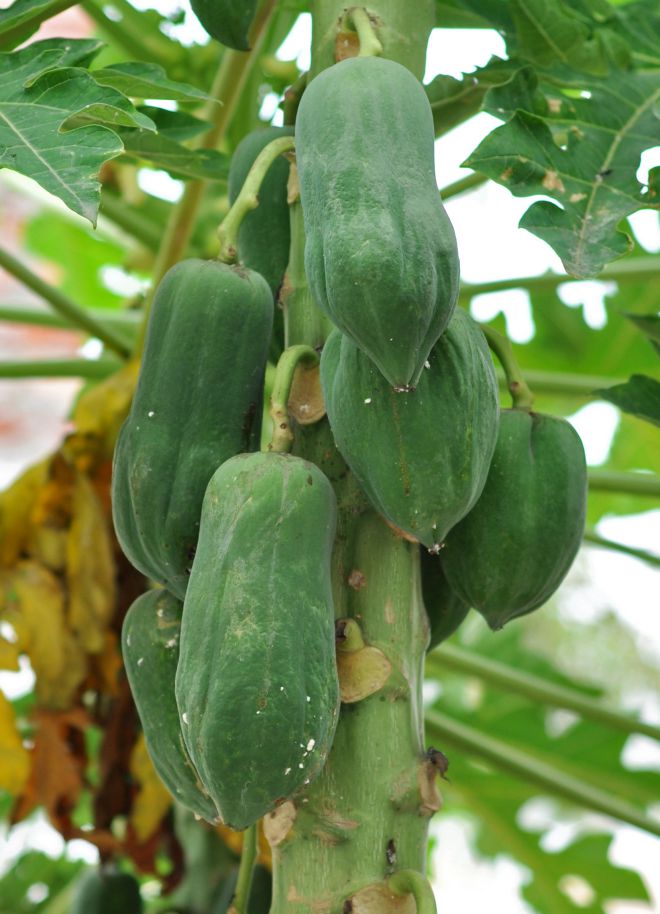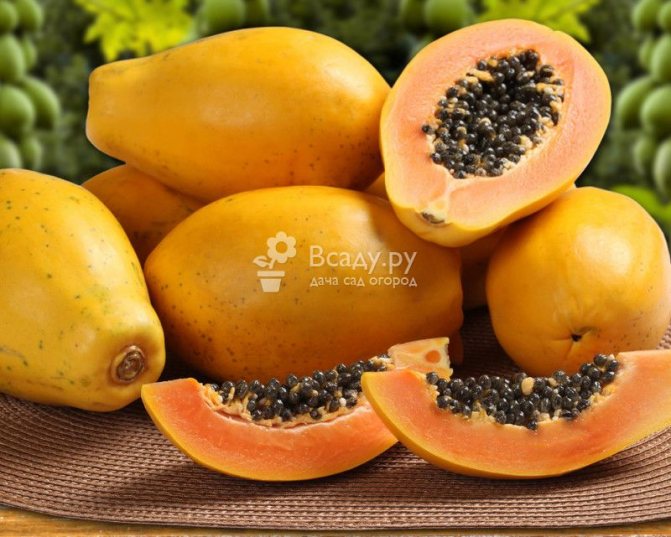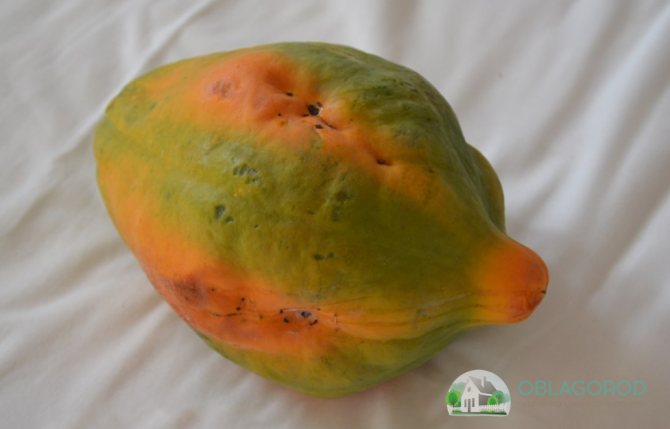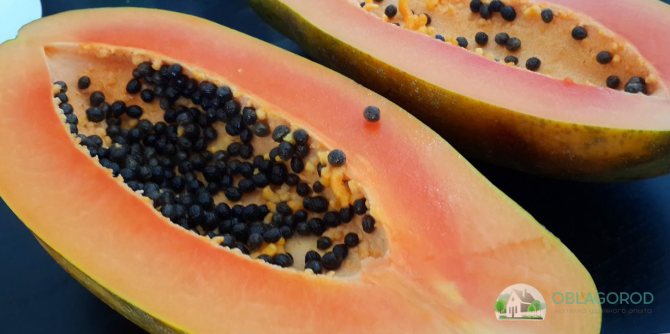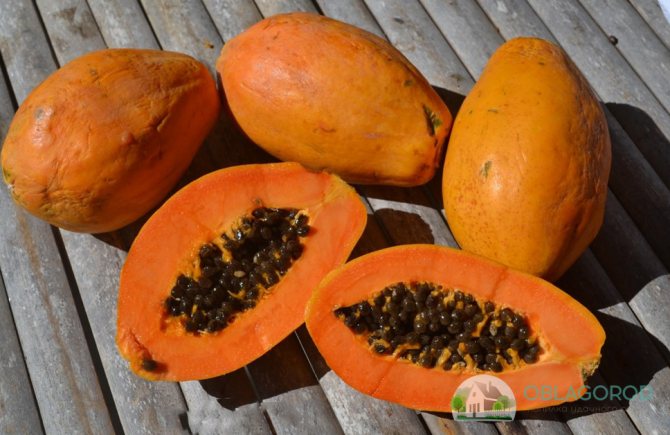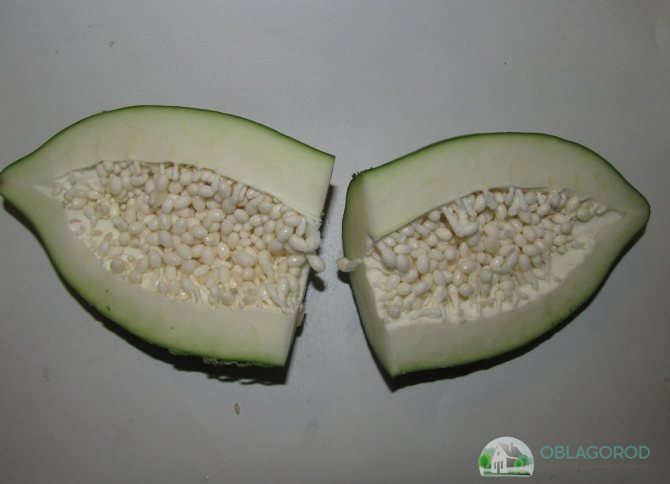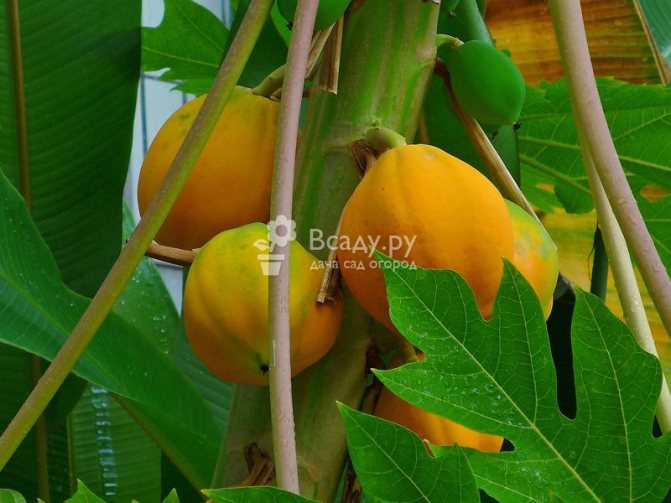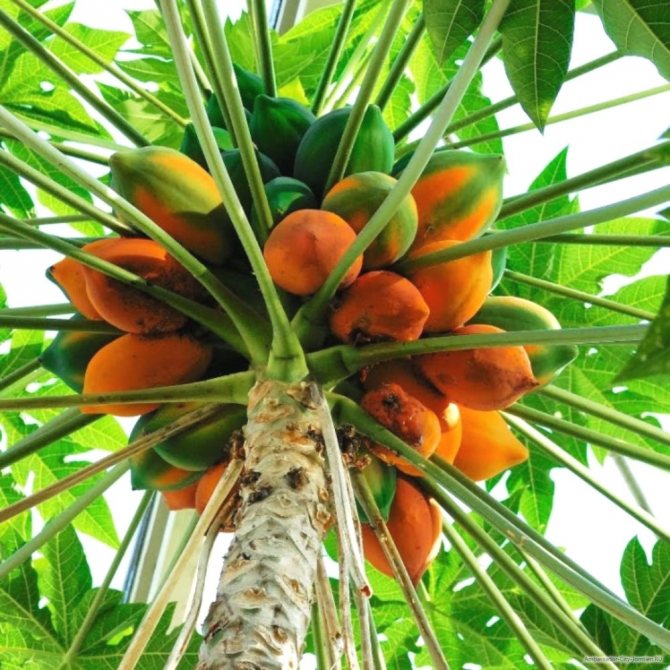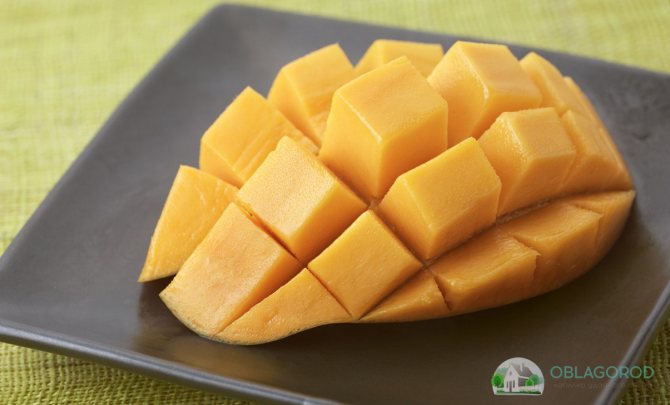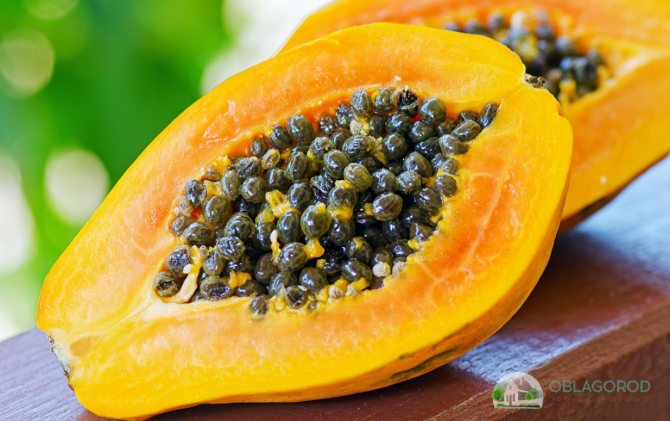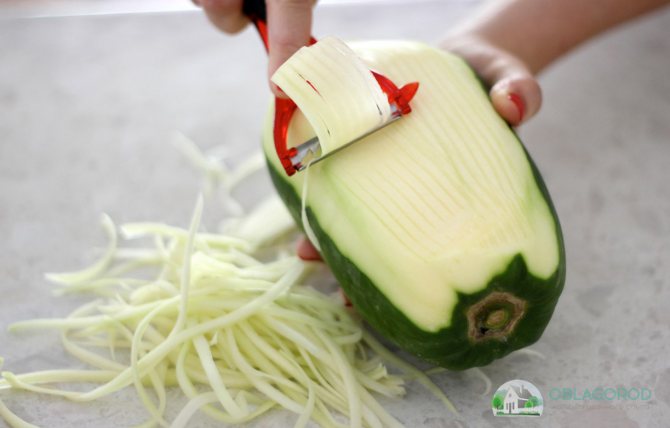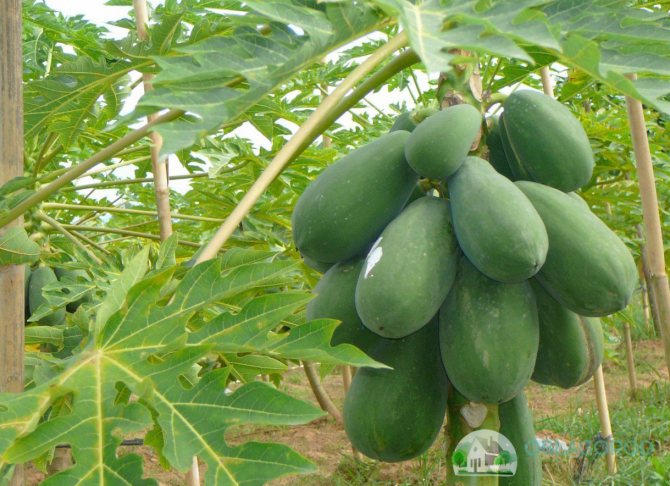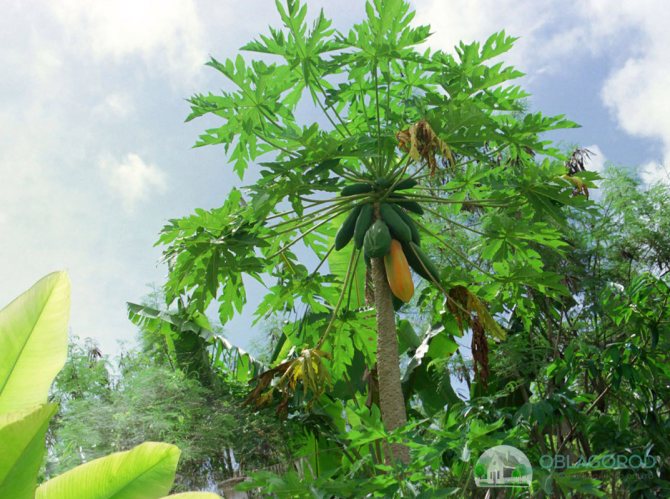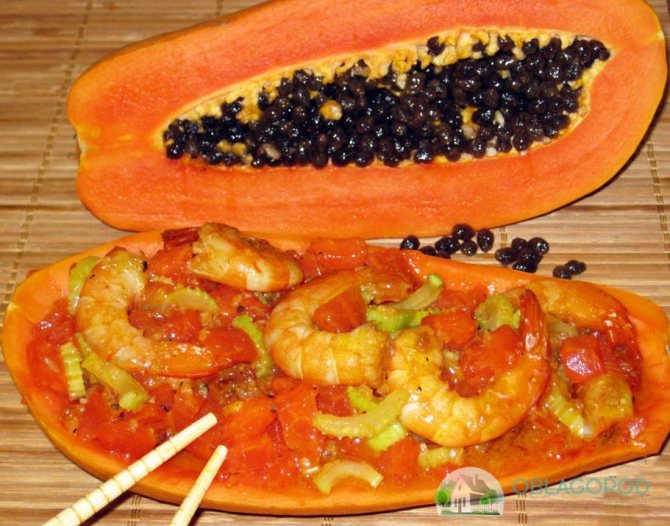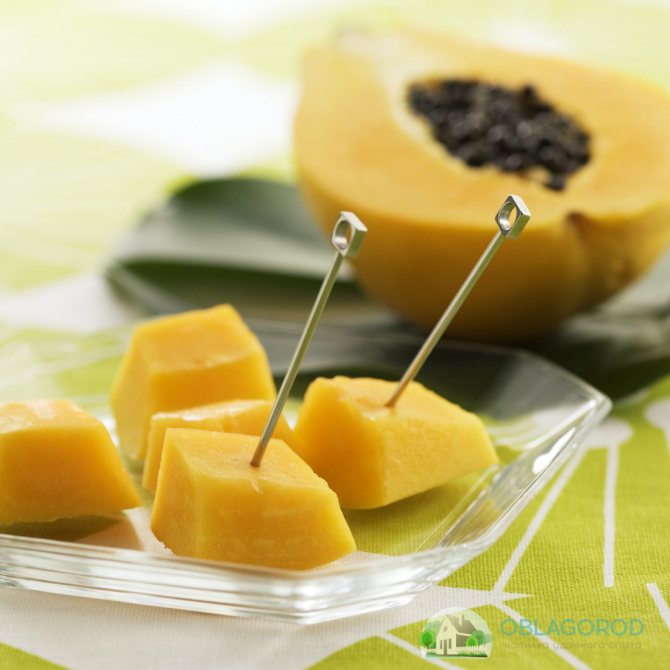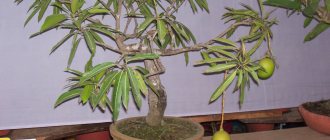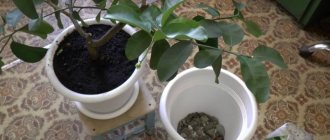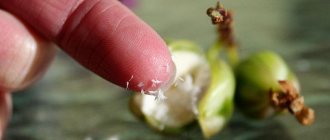Papaya (Carica papaya) is a species of woody plants belonging to the Carica genus of the Caricaceae family. It is often called the melon tree because of its delicious and healthy melon-like fruits. Papaya originates from Central America, where it is a valuable food product. But the absolute leader in the export of papaya is India, where the plant has taken root well.
Papaya is a plant similar to a palm tree with carved leaves
Papaya - description
Outwardly, the papaya tree looks like a coconut palm, it reaches 6-8 meters in height, a rosette of leaves forms in the upper part, flowers appear in their axils, subsequently fruits are formed from them. The beneficial properties of the papaya fruit are numerous, the orange pulp indicates a high content of beta-carotene in it. In terms of chemical composition, papaya includes almost half of the periodic table, fruits contain a lot of vitamins, flavonoids, magnesium, potassium, iron, pantothenic acid, protein, and fiber.
The papaya fruit is used in folk medicine for better digestion, to eliminate pain from burns and insect bites. The use of this tropical fruit is recommended for people suffering from bronchial asthma, peptic ulcer disease. Extracts made from the fruit help the liver to function properly and stabilize blood sugar. With the help of tough pulp, they cleanse the stomach, neutralize stomach acid, which is very useful for gastritis, hernia and heartburn. This fruit is a source of vigor and strength.
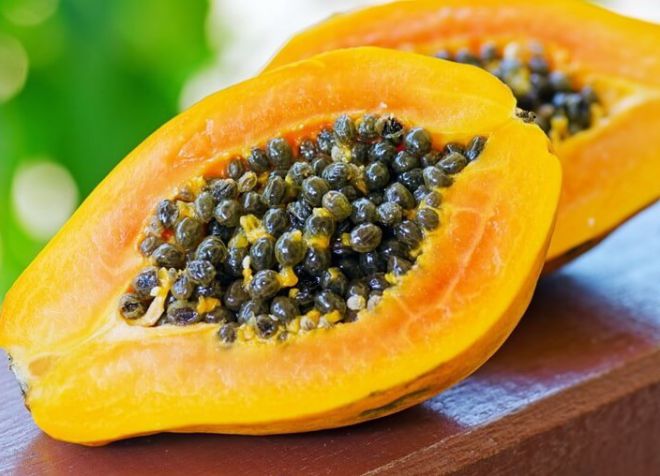
Spread
It grows wild in Asia and tropical America. Grown in India, the Philippines, Mexico, Brazil, Hawaii, Jamaica and many other tropical countries. In the south of Russia there are experimental plantings of this plant. Papaya is a fruit tree. Each country where it is cultivated has its own forms and varieties.
The papaya tree is thermophilic, but it does not tolerate extreme heat. Not demanding on soils. It can be damaged by severe frosts.
A photo of papaya is presented below in the photo gallery.
How to grow papaya at home?
Lovers of exotic grow papaya at home, using for this both a room and a balcony, a greenhouse, a winter garden. To do this, you should take seeds extracted from a ripe fruit or purchase cuttings, and with some agrotechnical measures you can grow a tree, which, having developed, will bloom in the second year and give the first harvest, fruits at home can have a mass of up to 2 kg. The conditions created for the papaya should be close to tropical.
To imagine what a papaya fruit looks like, think of a melon. These fruits are so similar in appearance, chemical composition, internal orange-yellow, juicy pulp and thick rind that the second name of papaya is "melon tree". Individual specimens of papaya fruits can reach 9 kg, on average they weigh 7-8 kg, grow up to 30-45 cm in length, in the middle of the fruit there are black seeds. To get the harvest, you should have two plants - male and female, pollinating each other.
Planting papaya seeds
Having decided to start growing papaya at home from seeds, get a ripe fruit from which you can extract five to six hundred small seeds. After taking out the seeds, they need to be rinsed under a stream of warm, running water, freeing from the pulp.Then choose from a large number of 8-10 pieces, place in wet sand or moss, cover with plastic wrap and leave overnight, you can use growth biostimulants.
The seeds should be deepened into the soil by 2-3 cm, covered with a film or transparent glass on top to form a mini-greenhouse with a warm microclimate, which should be ventilated daily for at least 1-1.5 hours during the day. The papaya fruit has 100% seed germination, the sprouts that appear after 15-30 days are planted one by one in separate containers, choosing the strongest seedlings for this.
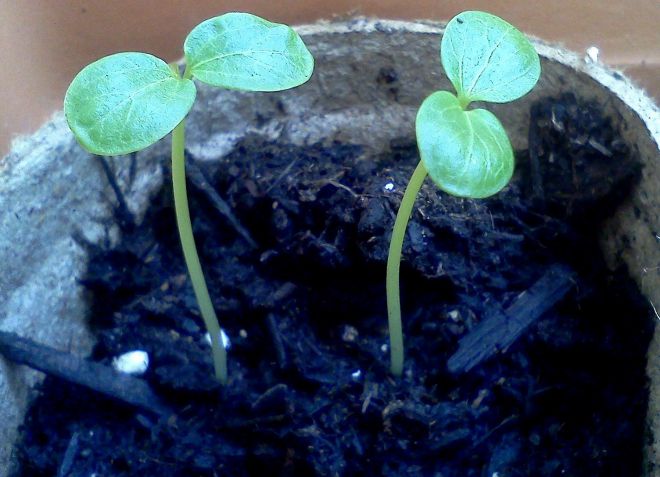

Grow papaya from seed at home - planting
It is best to plant papaya seeds in early March, at which time the daylight hours increase, and the plant will receive the necessary amount of daylight. Additional lighting will be required in autumn or winter. Planting is carried out in a mixture prepared in advance by yourself or in a prepared special soil, the sowing container should be at least 7-9 cm in diameter.
Experienced gardeners answer the question of novice lovers of exotic cultivation at home: is it possible to grow a papaya tree at home, they answer positively, you should only provide the required comfortable microclimate and carry out the recommended agrotechnical measures. Fruit seedlings, being representatives of the tropics, are warm and moisture-loving, require careful handling, regular and competent care.
Mango
Another delicious tropical delicacy. What is the difference between mango fruit and papaya? Size, color, taste. The photographs clearly show this.


External structure of a tree and fruit
Mango is an evergreen plant. The height of the trees has a wide range: from 7 to 45 meters. The crown is about 10 meters in diameter. Young leaves are yellowish with a pink tint, grow quickly, changing color to dark green.
Papaya - cultivation
Having familiarized yourself with how to grow papaya at home, it is not difficult to understand that this process is not difficult, it is only important to follow all the recommendations for planting and care. Providing a temperature regime within + 24-28 ° С in summer, and at least + 18-20 ° С in winter, moist air, regular, moderate watering and long daylight hours (using artificial light sources, if necessary), you can achieve success and even get a harvest.
Papaya soil
To grow papaya fruit at home, a slightly acidic substrate should be prepared, the pH value of which is in the range of 6-6.5 units. To obtain the desired composition, take one part of fertile soil, peat, sand, deciduous and sod humus, or purchase a ready-made soil mixture in a store. Choose a substrate for universal or for ficuses, hold it in a water bath to disinfect it and add 30% of the total sand. To allow excess moisture to drain freely during watering, provide the plant with good drainage.
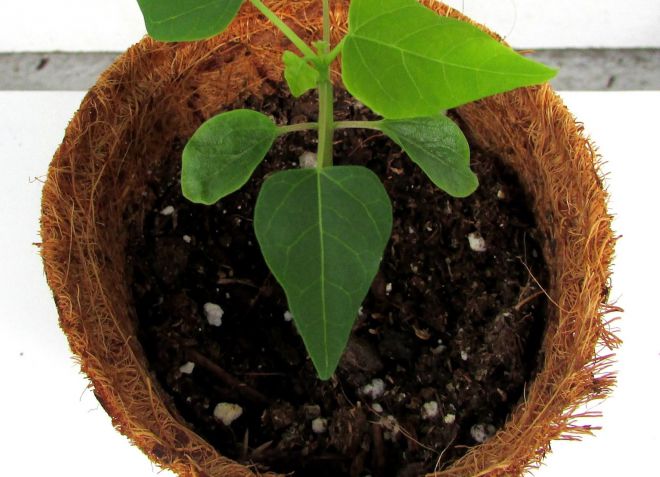

Papaya pot
The papaya tree grows quickly, requires periodic and timely transplantation into pots, which are large in volume each time. Plants need to be transplanted with caution, if the roots are accidentally damaged, this can adversely affect subsequent growth and even lead to the death of the tree. A very practical and convenient solution is to plant seeds in peat pots, after the roots appear through their walls, the papaya can be painlessly planted in a large container without disturbing the root system.
For growing papaya at home, it is better to use natural pots with drainage holes. Choose pots that are heavy in weight so that the plant does not tip over, wide but not deep, because the papaya has a shallow root system.An adult one and a half to two meter plant requires a volume of at least 50 liters.
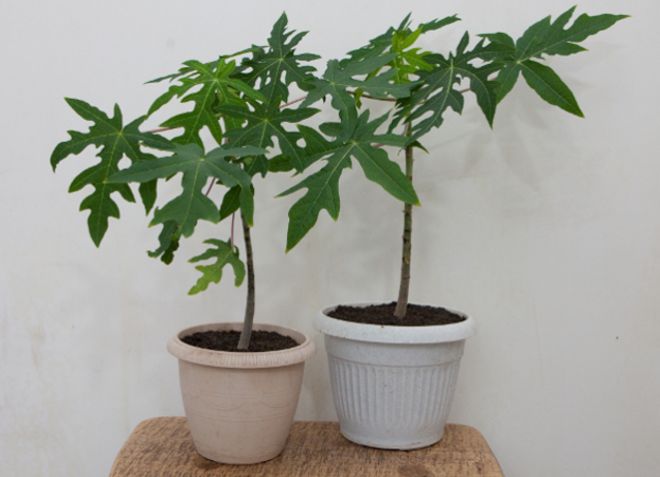

Melon tree varieties for cultivation in Russia
Why the hydrangea paniculata, tree-like, large-leaved does not grow
Some gardeners grow melon pear, pepino in their backyards. However, the growth process takes much longer than the cultivation of its relatives: tomatoes, eggplants, potatoes. The fruits ripen 4-5 months after planting. At temperatures above 25 ° C, the fruits are not tied, therefore, for successful growth on the territory of Russia, it is necessary that warm weather without sharp temperature fluctuations stood for about six months.
Note! Some gardeners harvest by covering the plant with a protective film in bad weather. Others choose to grow the melon tree on their windowsills and provide the necessary conditions throughout the season.
For 2019-2020 the most common melon varieties are Pepino Consuelo and Pepino Ramses. The Ramses variety is the earliest and most resistant to external stimuli such as wind, bad weather, heavy rains. It is also resistant to high humidity and temperature fluctuations. The Consuelo variety is distinguished by its fruit color, it is bright yellow with lilac blotches. The taste is closest to the taste of melon. Both of these varieties can be grown both in the garden and at home. Fruits are medium in size, from 150 to 750 g, their flesh is sweet and sour and juicy.
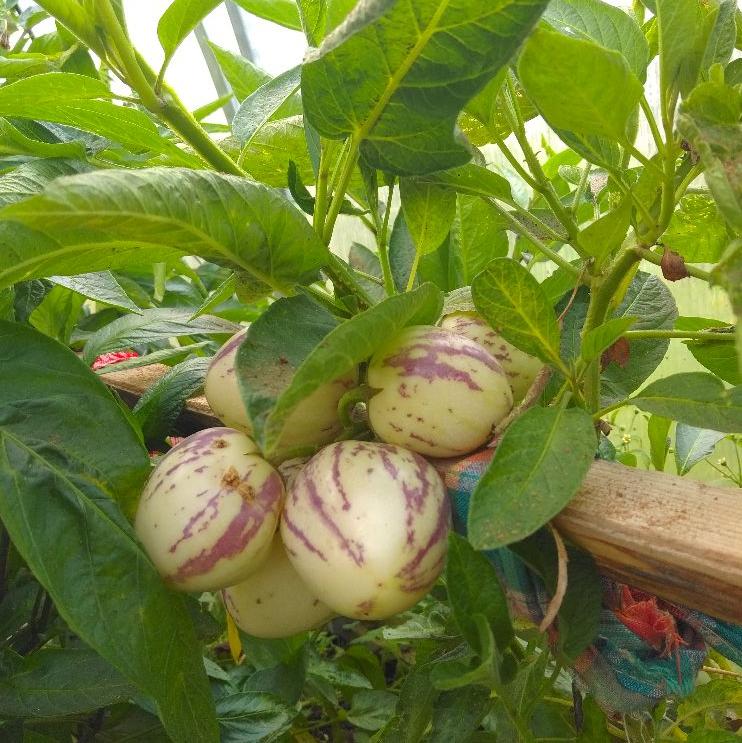

Pepino Consuelo
How to care for papaya at home?
If you decide to try your luck and grow papaya at home, provide care that matches its tropical origin:
- transfer. In the first year of the plant's life, it will be necessary to change the containers two or three times; subsequently, the transplant can be done once a year;
- fertilization. After two weeks, after the first dive, apply a complex mineral fertilizer, then once a month;
- temperature regime. The tropical plant is thermophilic, low temperature is unacceptable;
- humidity. The humidity level must be high, failure to do so will lead to drying out of the leaves and death of the seedling;
- lighting. It is best to place the papaya on a window overlooking the south or southwest side, it needs bright lighting;
- watering. The soil should not be allowed to dry out, but excess moisture is also harmful.
Planting papaya at home is not difficult, the main thing is to provide timely and competent care. By observing a number of conditions listed above, you will grow a well-developed, strong and healthy tree. The stems and leaves of plants need frequent spraying not only in summer but also in winter. A large amount of light, moisture, a warm microclimate, fertilizers applied on time - this is the main list of measures that provide comfortable conditions for this exotic tree.
How to Grow Papaya - Watering
When caring for papaya, pay special attention to watering the fruit, waterlogging will create a number of problems that can lead to the death of the plant. This exotic fruit tree is sensitive to root rot due to excess moisture and poor drainage, especially if it grows at insufficient temperatures. Water the plant with soft water at room temperature, in the heat - well moisten the crown, use settled water for watering and spraying. Water regularly, every 3-4 days, in small doses.
Exotic fruit papaya - top dressing
The rules for growing and caring for papaya require not only the creation of the necessary conditions, but also regular feeding, this plant is rapidly developing, always "hungry". For this, balanced complexes of mineral fertilizers or organic matter are used, and for a blooming plant, the amount of phosphorus and potassium supplements is increased.Apply fertilizing twice a month throughout the year.
In the spring, a period of active growth and development of the plant begins, it needs nitrogen, which is contained in ammonium nitrate. In the summer, support the papaya fruit with superphosphate and nitroammophoska added to the ground, use them once every two weeks. Vermiculite is a top dressing that should be used to care for an adult plant. The papaya tree perfectly accepts various types of fertilizers and dressings.
The subtleties of selecting material for planting
When planning to grow a tree from seed, choose seeds only from fresh fruit. For reliability, you can plant several copies. During cultivation, not all seedlings take root due to their sensitive attitude to the microclimate.
To get the bones:
- the fruit is cut in half;
- take out the seeds;
- washed under clean running water at room temperature (to avoid overheating or hypothermia of the planting material);
- dry for 24 hours;
- reject damaged seeds.


Exotic papaya fruit - diseases and pests
Having learned what the papaya fruit is, how many useful qualities it contains, exotic plant lovers begin to grow it at home. Some of the dangerous pests for the papaya fruit are aphids and spider mites. You can get rid of them with the help of decoctions of onions, garlic, yarrow, some other insecticidal herbal crops or an aqueous solution of actofit. The appeared white bloom "powdery mildew", which has a fungal origin, can be removed with a weak solution of copper sulfate or colloidal sulfur.
